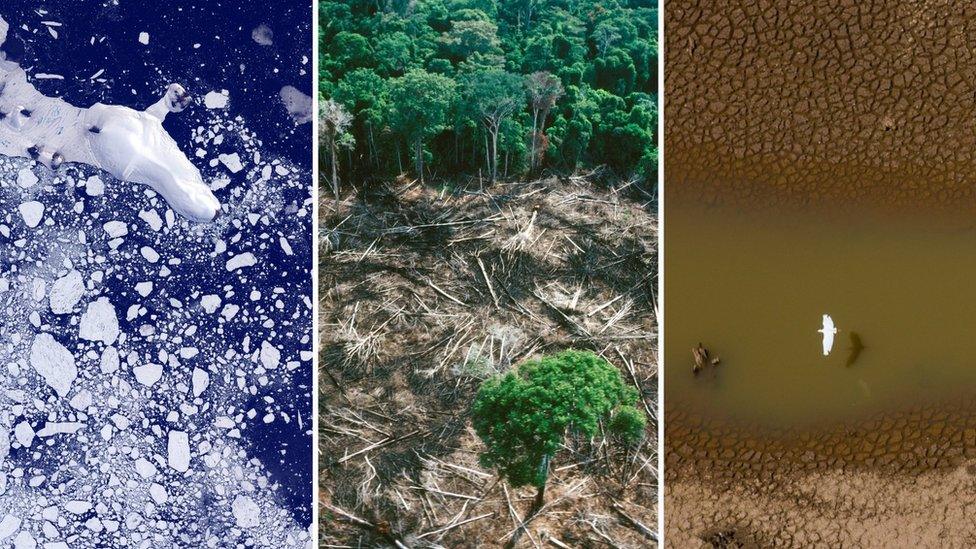Climate change: How global warming & rising sea levels are affecting Fiji
- Published
- comments
WATCH the full special programme. (This piece was filmed in February 2020, before COVID-19 restrictions were implemented.)
Sea levels are rising at a faster rate than ever recorded around the world.
It has already had a big impact in many places, especially low-lying countries in the South Pacific.
Fiji is an island nation in the Pacific Ocean and climate change is already causing huge problems for the people and environment there.
Warmer global temperatures have meant higher tides - land, crops and even whole villages have been lost to the sea, as well as devastating storms and coral bleaching.
Fiji
WATCH: Find out why are islands in the Pacific more affected by climate change than other parts of the world
Fiji is a country made up of a group of around 300 islands in the Pacific Ocean. Many of the islands are small and low-lying and people there live close to the sea.
People rely on growing crops, fishing and tourism to make a living and the country is famous for its coral reefs.
Warming and rising seas are having a big impact on people living there with more frequent and intense cyclones, flooding, drought and coral bleaching causing huge damage to the way of life there.
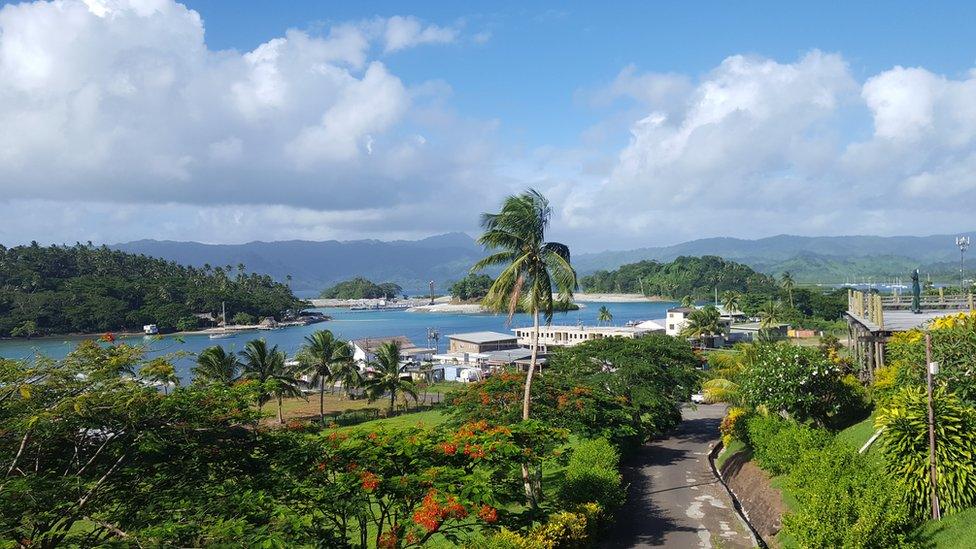
Dr Tammy Tabe from the University of the South Pacific in Fiji explained how climate change is affecting the country. "It has a greater impact for small islands in the Pacific like Fiji because we are small and most of the settlements, the communities, are located along the coast," she said.
"We have poor infrastructure (roads and buildings) and so we can't really adapt fast to rising sea levels compared to developed countries with bigger economies."
In Fiji they have been doing a lot of work to adapt to the situation and limit the impact global warming is having on the country but Dr Tabe says that there needs to be a global effort to reduce emissions so that the effects of climate change can be slowed down.
Rising tides
WATCH: Climate change: How and why are sea levels rising?
The planet is getting warmer because people are releasing more greenhouse gases into the atmosphere. This warming causes glaciers and the polar ice caps to melt, releasing extra water into the sea.
Also, when the planet warms, the temperature of the sea increases which makes the water expand and the sea level rise. This is called thermal expansion.
World leaders signed up to a commitment to try to limit the global temperature rise to 1.5 degrees Celsius in the Paris Agreement in order to reduce the impact of climate change, but even if that target is achieved sea levels will still rise significantly.
In 2018 the Intergovernmental Panel on Climate Change (IPCC), a worldwide group of scientists and experts, carried out a report into the impact of a 1.5C rise in global temperature.
It found that by 2100 sea levels could increase by between 23cm and 77cm compared to levels between 1983-2005.
Predictions based on higher levels of emissions suggest that sea levels could rise by more than a metre globally.
Recent studies have suggested that icecaps are melting at 'worst case' prediction rates meaning sea levels could rise quicker than expected.
This would have a huge impact on low-lying countries and coastal communities.
The lost villageof Vunidogoloa
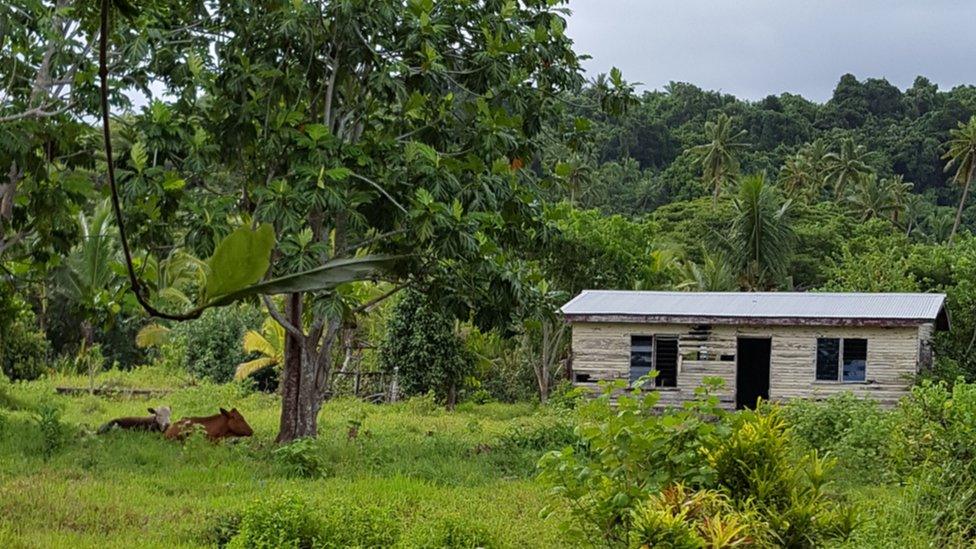
Houses at the old village site have been abandoned and cattle roam freely through the centre, some of the buildings are now 10 metres underwater
If sea levels continue to rise as expected, large parts of Fiji may become unliveable. These abandoned houses were once home to the people of Vunidogoloa.
In 2014 it became the first ever village in Fiji to be abandoned because of the effects of climate change. The people moved away to new village on higher land two kilometres away.
Headman Sailosi Ramatu said they had to relocate because "water came easily into the village, up to our knees, we had to swim around our houses".
Although the move was necessary the villagers have lost a way of life as well as their former homes. "Even though we are safe away from the impact of climate change, our mind, our soul, always thinks back to our old village site," he said.

The new village is further inland which means it safe from the tides but lots of people miss the benefits of being so close to the sea
It's not just this village, more than 80 low-lying coastal communities in Fiji are set to be relocated due to the rising sea.
Fiji is not the only country where this is a problem either, some islands in Kiribati are only two metres above current sea levels so might disappear altogether as sea levels rise, or become uninhabitable.
Countries like Bangladesh, the Netherlands and Indonesia are likely to have radically different coastlines in the future.
Lots of cities around the world are on the coast and these could be threatened by the rising seas.
The impact of climate change is felt more in smaller places with fewer resources. That's because developed countries have more money and therefore more options on how to reduce the impact of climate change.
Coastal flooding
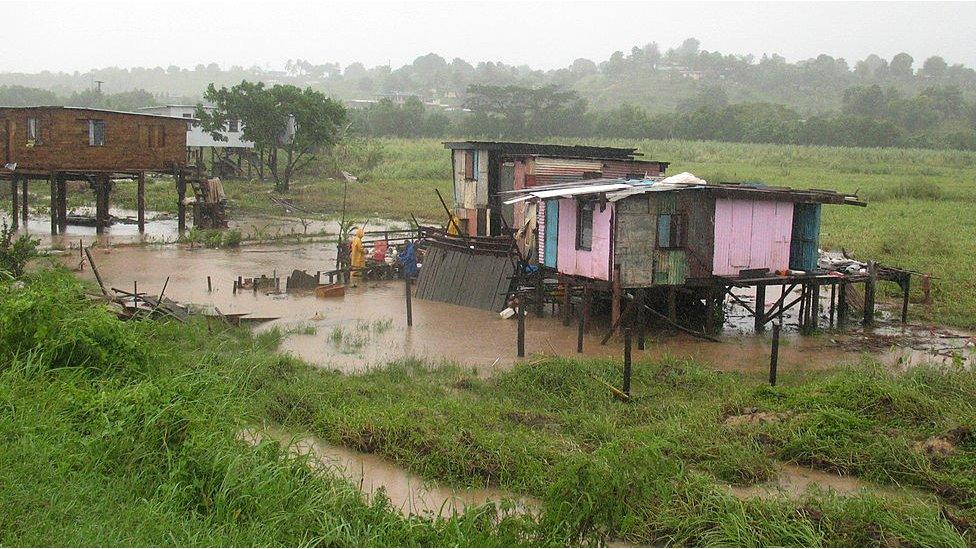
This picture taken in 2012 shows houses on stilts standing amongst floodwaters near the town of Singatoka, Fiji
Salt water coming on to the land is happening more often due to higher tides and tidal surges during big storms.
As sea levels rise it can also rise up underneath small islands called atolls, which is known as salt water inundation or intrusion.
The seawater can pollute drinking water sources and make land too salty to grow crops on.
This can have a huge impact on people's ability to support themselves and make money.
It is worse on the smaller islands where people can't move inland to find somewhere else to grow food.
Cyclones

Entire villages were destroyed during cyclone Winston in 2016
Cyclones or tropical storms are a natural part of the weather system around the tropics but climate change is making them more frequent and more intense meaning they cause more damage when they happen.
Cyclones only form when the water reaches 26 degrees Celsius. There are seven different ocean or atmospheric conditions needed before they happen.
Normally only a couple of these occur but because of warmer seas caused by climate change, more and more of these conditions are happening at the same time creating more intense storms.
Cyclones are labelled according to how strong they are from one to five, with five being the most intense. Countries in the Pacific are now more likely to experience category five storms.
In 2016 a devastating cyclone hit Fiji. It was a category five storm named Winston and was the most intense tropical cyclone in the Southern Hemisphere on record.
Entire villages were damaged or totally destroyed in the strong winds and crops were lost when seawater washed on to the land.
Around 40% of Fiji's population was significantly impacted by the storm and 44 people died.
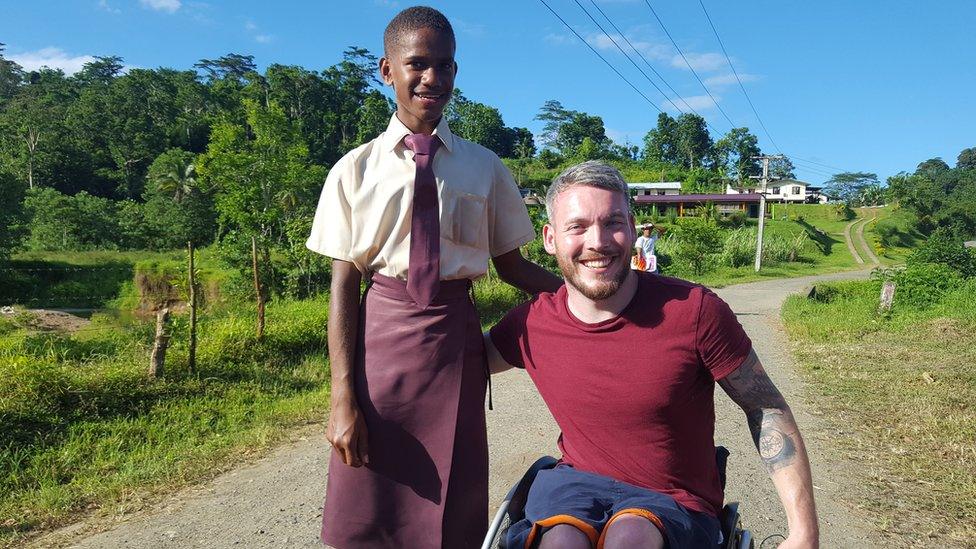
Timoci showed Martin around his village which was badly damaged during Cyclone Winston
Timoci was 11 when his village was badly hit by Cyclone Winston.
His house and school were damaged and four years on there is still building work going on to replace what was lost in the storm.
Timoci says the experience really affected him and spurred him on to speak out about climate change.
In 2017 he gave a speech at COP23 the United Nations (UN) Climate Change Conference, calling for more to be done to slow global warming.
He says young people need to "take action" and "raise their voices" to ask for change.
"I hope the leaders of today will take action because we can't ignore climate change it is happening right under our noses," he said.
Coral bleaching
Fiji is home to the most extensive coral reef in the South Pacific Ocean and plays a really important role in the country's tourism trade.
As well as providing jobs it is also an important part of the ecosystem, protects the islands from coastal erosion, and is home to fish and marine life which are a source of food for people living there.
Warming seas are damaging the reef and recent coral bleaching events caused a huge amount of damage.
Climate change: What is coral bleaching?
Scientist Victor Bonito studies the reef in Fiji and saw the devastating impact of coral bleaching in 2016 when lots of coral was damaged when the sea temperature became too warm.
Thousands of fish died because of the damage to the reef and lots of the coral died.
Bonito worries the reef could be lost unless something is done on a global scale to reduce emissions.
"Unless we address the underlying problem that's causing climate change we're not really going to stand much of a chance of saving our coral reefs," he said.
"This is our first ecosystem which is really on the frontline of this battle with climate change."
To try to help he has been studying corals which cope better with warmer waters and planting more heat-tolerant types in his nursery off shore to help the reef regenerate.
Mangrove planting
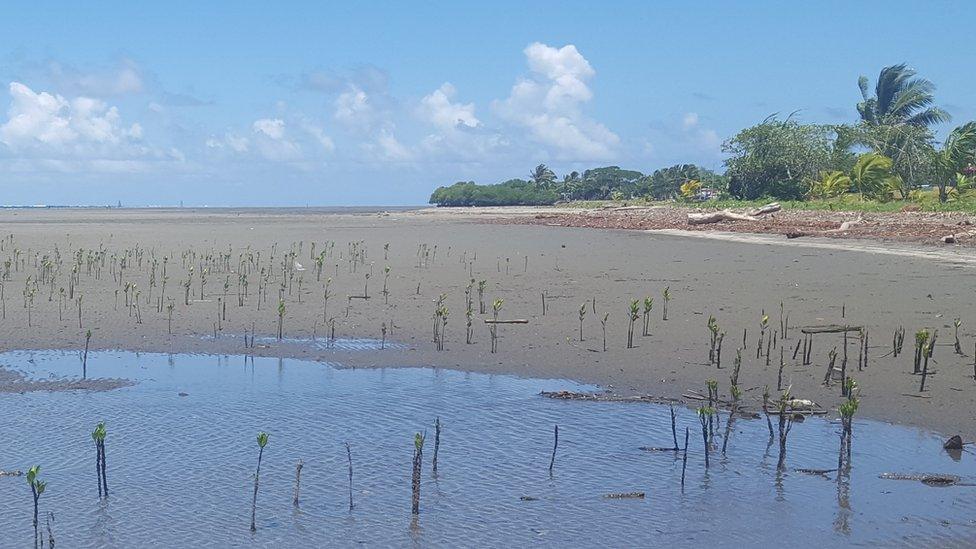
Mangroves being planted at low tide on the shore near Suva, Fiji
Mangroves are trees which grow near the sea in salty water. They are very helpful in the fight against the causes of climate change and they reduce the impact of the effects of it too.
Like other plants they absorb carbon dioxide from the atmosphere and produce oxygen which reduces the amount of the greenhouse gas in the atmosphere.
Their roots help to bind the sand and soil along the coast which means water moves more slowly and the coast is protected against flooding, the impact of storm surges during hurricanes and coastal erosion.
Mangroves help keep the water clean by trapping impurities and stop sediments from the land washing into the sea and damaging coral reefs.
And they provide shelter and a habitat for lots of endangered animals which help protect biodiversity.
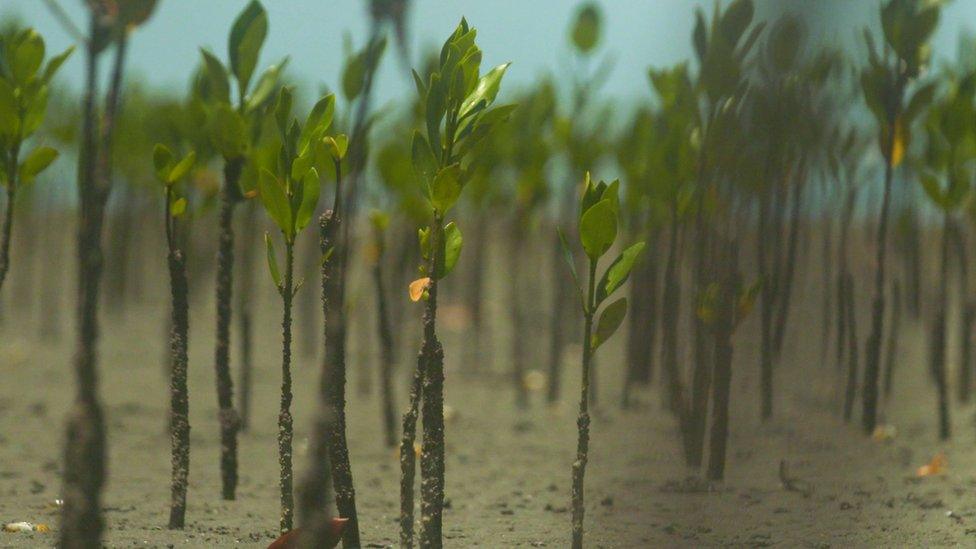
Mangroves help stabilise land on the coast and absorb lots of CO2
In 2019, teenager AnnMary joined a Global Climate Strike protest during the UN Climate Summit in New York to raise awareness of the problems faced by people in Fiji and to call on adults to do more to combat climate change.
"My generation and I are cleaning up the mess we did not create," she said.

AnnMary at a climate march in New York
She also campaigns against plastic pollution, organises beach clean ups and has been planting mangroves along the coast in Fiji with her friends to try to help reduce the impact of climate change on the country.
She says she feels empowered by being able to do something to combat climate change herself and will continue to plant them until she can't plant any more.
- Published14 September 2020
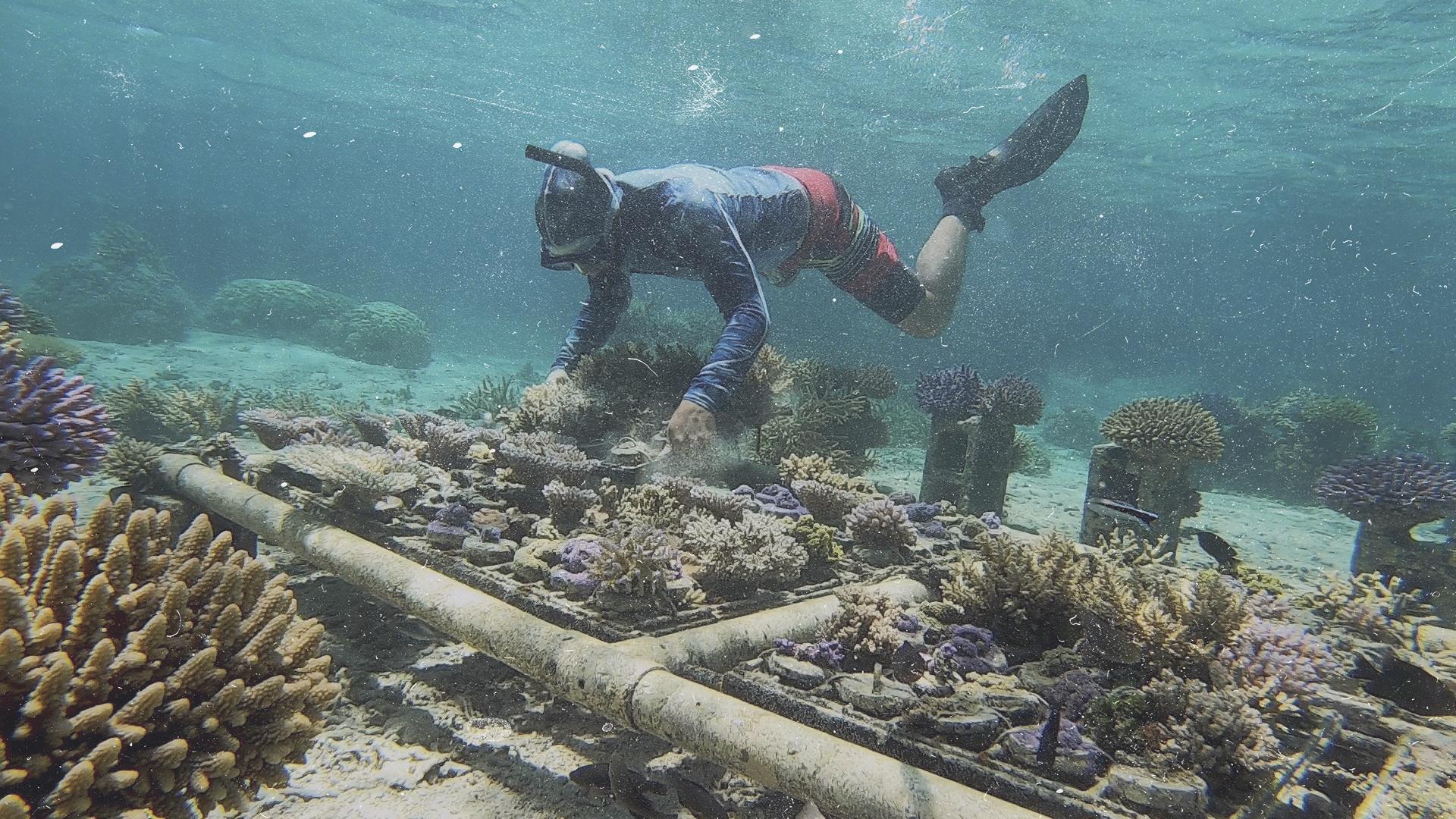
- Published28 April 2020
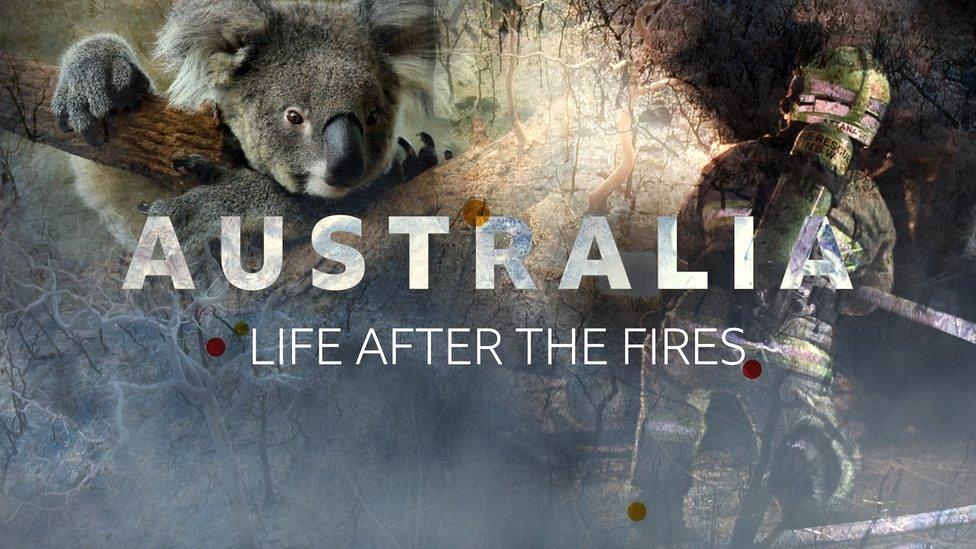
- Published9 September 2020
